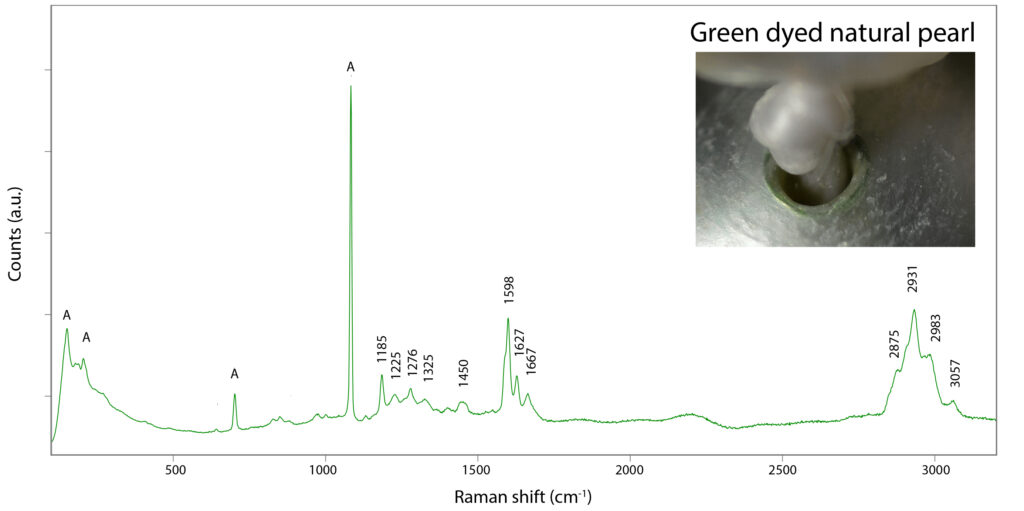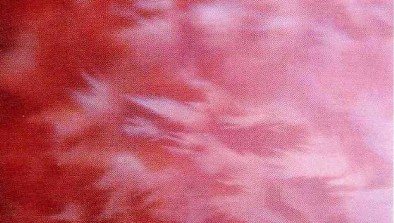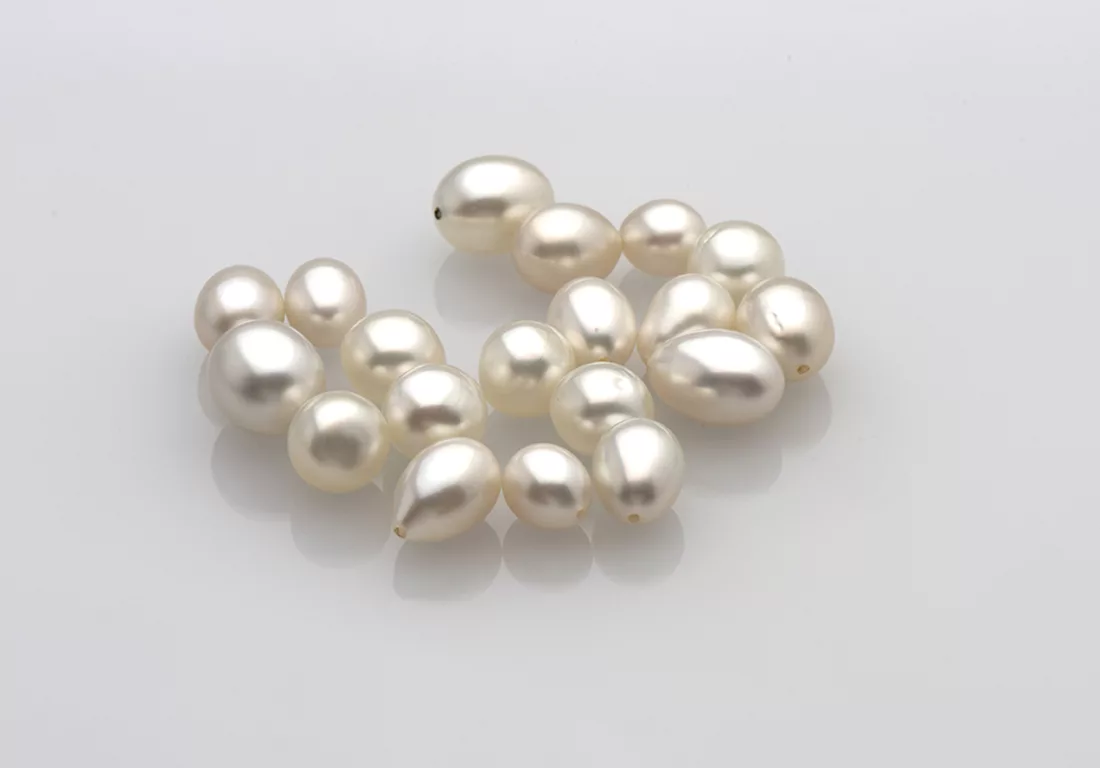
Natural pearls dyed green
by Dr. M.S. Krzemnicki, first published in Facette 27 (June 2021)

The body colour of pearls is normally related to the presence of natural colour pigments produced by the mollusc during pearl formation. Another option is to colour pearls artificially, with dyeing being the most readily available method. Often applied to rather low-quality freshwater cultured pearls, these treated cultured pearls commonly come in fancy colours, which make it obvious that they were treated.
Natural pearls which have been dyed are much rarer. In most cases, these treated natural pearls were dyed in a way to create only a subtle shift of colour considered more attractive.
A natural pearl necklace submitted recently to SSEF can be considered a rarer but excellent example of such dyed natural pearls. Visually, the 41 natural pearls in this necklace showed a slight greenish hue, blending nicely with the purplish to bluish overtones (‘pearl orient’) present at the surface of these pearls (Figure 1). A closer look with the microscope, however, clearly revealed green colour concentrations around the drill-holes (inset in Figure 2) of these pearls, a tell-tale sign of artificial dyeing. The treatment is further confirmed by Raman spectroscopy, with characteristic Raman peaks related to the green dye in addition to the aragonite peaks (marked A) of the nacre itself.

Want to learn more about pearls?

Sign up for our free online course: Introduction to pearls


